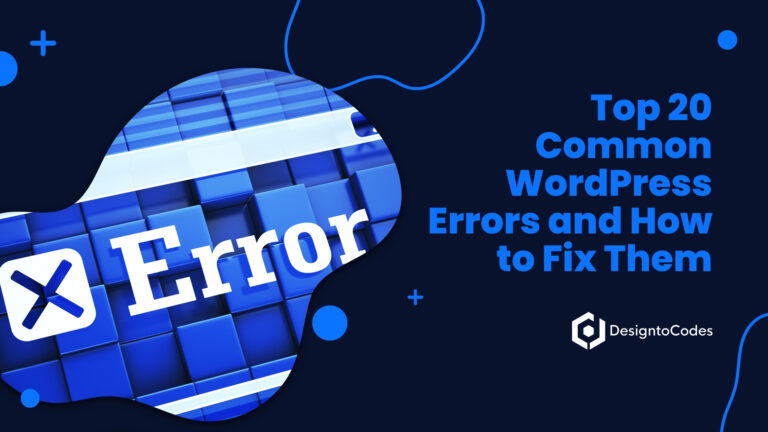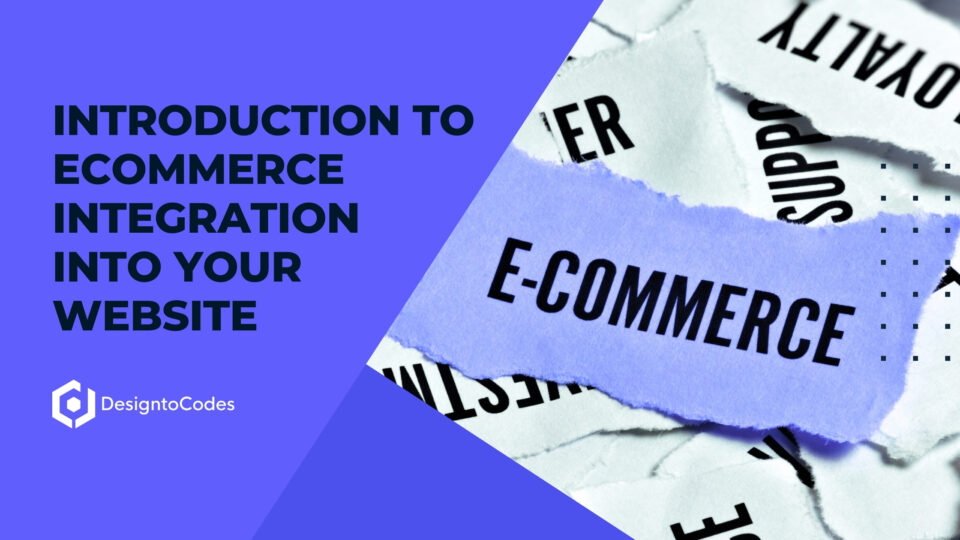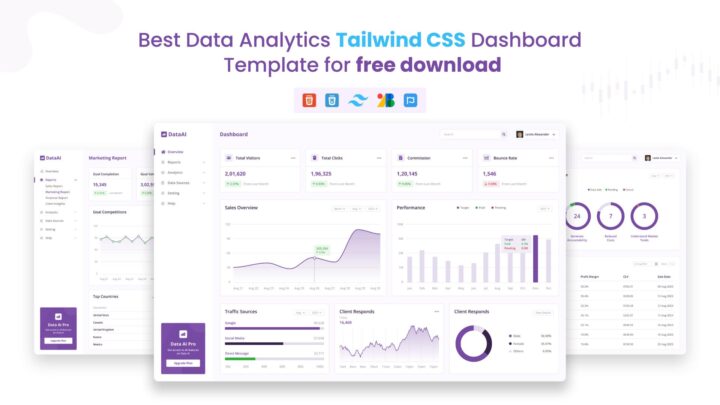
Introduction to eCommerce Integration into Your Website
Ecommerce integration refers to connecting an online storefront with back-end business systems and applications. It enables seamless sharing of data and processes between all parts of an ecommerce business.
The key types of systems integrated with ecommerce platforms include:
- ERP (Enterprise Resource Planning) – integrates core business processes like inventory, order fulfillment, accounting, HR
- CRM (Customer Relationship Management) – manages customer data, marketing, sales
- WMS (Warehouse Management) – optimizes warehouse operations and inventory tracking
- Accounting software – syncs order and payment data for bookkeeping
- Shipping solutions – connects orders to shipping carriers for label printing and tracking
- Marketing platforms – shares customer data for segmentation and campaigns
Robust integration is crucial for modern ecommerce businesses. It eliminates silos between systems, reduces manual work, minimizes errors, and provides a unified view of operations. This enhances efficiency, decision-making, and the customer experience.
With comprehensive integration, businesses can have real-time inventory visibility, automated order processing, smoother fulfillment, and better customer support. It enables an omnichannel experience across devices and channels.
Overall, integration is key to streamlining ecommerce operations, unlocking growth, and delivering delightful customer experiences. It connects the dots across technologies so businesses can function as a unified whole.
Benefits of eCommerce Integration
Integrating an ecommerce platform with other business systems and applications can provide numerous benefits that drive growth and success. Some of the key advantages include:
- Improved Efficiency: Seamless integration eliminates manual processes between systems, allowing for automated data flows. This streamlines operations, reduces errors from rekeying data, and enables staff to focus on higher-value tasks. Integrations can connect order management, inventory, fulfillment, accounting, CRM, and other systems to create efficient workflows.
- Enhanced Customer Experience: Customers expect a unified experience when engaging with a brand across channels. Integration facilitates a single view of the customer across touchpoints and enables omnichannel capabilities. This allows delivering consistent, personalized experiences across web, mobile, in-store, and call centers.
- Increased Sales and Revenue: By connecting ecommerce platforms with marketing, sales, and customer data, businesses gain insights to attract and convert more customers. Integrations also enable advanced merchandising to boost cross-sells, upsells, and customer lifetime value. Fulfillment and inventory integrations ensure products are available to sell.
- Better Data Management: Integrations eliminate data silos and provide a single source of truth across systems. This enables data-driven decisions using accurate, real-time information on customers, products, orders, inventory and more. Automated data flows also improve data hygiene by reducing manual errors.
Challenges of eCommerce Integration
Integrating ecommerce platforms with other business systems can be complex and difficult in many cases. Companies face several key challenges that must be addressed for successful integration:
- Data Silos – Many businesses have data trapped in silos, spread across disparate systems that don’t communicate with each other. Product data may reside in one system, while order data is in the ERP, and customer data lives in the CRM. Integrating these systems requires consolidating and centralizing data.
- Legacy Systems – Outdated legacy systems that lack APIs and modern integration capabilities can hinder ecommerce integration efforts. Retrofitting connectivity into legacy systems is time-consuming and resource-intensive. Some legacy systems may need to be replaced or phased out.
- Security Concerns – With data flowing between many systems, security vulnerabilities are amplified. Rigorous access controls, encryption, and data governance must be implemented to secure integrations. Ongoing security monitoring and testing is crucial.
- Organizational Resistance – Company personnel may resist changing existing systems and workflows. User training and emphasis on integration benefits are key to driving adoption. Change management strategies help transition teams to new integrated processes.
ECommerce Integration Strategies
When it comes to ecommerce integration, companies can take different strategic approaches based on their business needs, technical capabilities, and resources. Here are some of the most common strategies:
Phased Approach
With the phased approach, integrations are implemented incrementally over time. This involves prioritizing the most critical integrations first, such as connecting your ecommerce platform to your order management system. Once the high-priority integrations are complete, you move on to secondary systems.
The phased approach allows you to focus resources on the most impactful integrations upfront. It also lets you test and refine your processes before expanding the scope. However, this strategy can result in a fragmented environment with multiple integration points. Strong governance and architecture is required to avoid creating data silos.
Big Bang Approach
The big bang approach attempts to integrate all systems at once. This strategy helps establish a unified environment from the start, avoiding piecemeal integration. However, the big bang approach requires significant upfront investment and carries higher risk.
This strategy is only feasible if you have the technical skills, partner support, and testing capabilities to deliver a complex integration project all at once. For larger initiatives, the big bang approach often makes sense. But for most companies, phased integration is lower risk.
Best of Breed Approach
With this strategy, you evaluate integration solutions individually for each system and select the best platform for each specific integration. This results in a heterogeneous environment with multiple integration technologies.
The benefit is you can choose more specialized platforms that are optimized for point-to-point integration between two systems. However, managing multiple integrations built on separate technologies can be challenging. Strong governance and management is essential to avoid fragmentation.
The right strategy depends on your business needs, capabilities, and legacy environment.
Selecting an Integration Solution
When selecting an eCommerce integration solution, businesses must evaluate options based on several key factors:
Cloud vs. On-Premise
Cloud-based integration platforms provide easier deployment and scalability compared to on-premise solutions. The cloud model reduces infrastructure costs and IT overhead for managing integrations.
Ease of Use
An intuitive, user-friendly integration platform enables business users to manage integrations without deep technical skills. Ease of use includes straightforward configuration, monitoring, and troubleshooting.
Scalability
As business needs evolve, the integration solution must seamlessly scale to handle growing data volumes, new systems, and increased complexity. Scalability depends on the underlying architecture and deployment model. Cloud platforms tend to be more scalable.
Vendor Support
The level of vendor support can make or break an integration project. Look for responsive, experienced vendors who provide training, troubleshooting, and technical expertise. They should deeply understand eCommerce systems and have proven success supporting customers.
Key Systems to Integrate
Seamlessly integrating your ecommerce platform with other key business systems is crucial for efficiency and growth. Some of the most important systems to consider integrating include:
ERP (Enterprise Resource Planning)
An ERP system manages key business processes such as accounting, procurement, project management, inventory, and order management. Integrating ERP with your ecommerce platform allows for real-time inventory updates, order processing and fulfillment from a central database.
CRM (Customer Relationship Management)
Integrating CRM gives a centralized view of customer data and interactions across channels. This allows for personalized marketing, targeted upselling and streamlined support. Syncing order data from ecommerce to CRM links transactions to customer profiles for better business insights.
Accounting
Connecting accounting software to your ecommerce platform automates tasks like order reconciliation, invoicing and payment processing. Financial data flows seamlessly between systems, improving reporting and compliance.
Inventory Management
Inventory management system integration provides real-time visibility into product stock levels. As items are sold online, inventory is automatically updated across systems. This helps optimize restocking, minimize overselling and improve forecasting.
Data Considerations
A successful ecommerce integration relies on high quality, accurate data being shared between systems. Some key data considerations include:
Data Mapping
Data mapping involves identifying the data fields in each system and mapping them to corresponding fields in other systems. This ensures seamless data flow and removes ambiguity. For example, mapping product SKUs, order numbers, customer IDs, etc. Proper data mapping eliminates duplication and mismatches.
Data Transformation
Often, data needs to be transformed or normalized before being shared between systems. This could involve changing date formats, converting currencies, standardizing product attributes, and more. Data transformation streamlines integration and prevents downstream issues.
Data Quality Assurance
Rigorous QA testing should validate that data is complete, consistent, and accurate across all integrated systems. QA processes like sanity checks, validation rules, and reconciliation reports can catch data errors and inconsistencies. This prevents “garbage in, garbage out” scenarios.
Testing and Validation
Robust testing and validation are crucial steps in any eCommerce integration project to ensure everything is working as expected before launch. There are several key types of testing that should be conducted:
Integration Testing
- Focuses on testing integrations between systems at API and data layers
- Verifies correct data flow and transformations
- Confirms systems can communicate and exchange data as intended
- Tests edge cases and failure scenarios
- Follows systematic test plans and test cases
User Acceptance Testing
- Validates integrations meet business and user requirements
- Includes hands-on testing by business users
- Tests major user flows and key functionality
- Provides feedback to refine integrations
- Ensures seamless user experience across integrated systems
Performance Testing
- Load testing, stress testing, and scalability testing
- Validates system performance under real-world load
- Identifies bottlenecks or slowdowns
- Confirms speed and reliability during peak usage
- Ensures the platform can scale smoothly with business growth
Thorough testing across integration points is key for identifying issues early and ensuring a seamless launch.
Managing Integrations
Ongoing management and optimization of ecommerce integrations is crucial for ensuring seamless operations over time. Here are some key aspects of managing integrations:
Monitoring Performance
Continuously monitor integration performance and data flows using integration platforms and analytics tools. Watch for latency, errors, downtime and other issues that could impact operations.
Maintenance and Troubleshooting
Conduct regular maintenance like testing, bug fixes, backups etc. to minimize problems. Troubleshoot any errors quickly by checking logs and investigating root causes.
Optimization and Improvement
Analyze integration data flows and business metrics to identify opportunities for optimization. Fine-tune integrations to improve efficiency, data quality etc.
Upgrades and Updates
Keep integrations up-to-date when systems or platforms are upgraded. Test extensively before deploying upgrades to avoid disruptions. Plan ahead for major version updates.
Proactive management and optimization of integrations ensures that connectivity between systems continues smoothly. This prevents disruptions to workflows and delivers the full benefits of integration over the long-term.
Future of eCommerce Integration
The future of e-commerce integration looks bright as emerging technologies open up new possibilities for streamlined omnichannel experiences. Here are some key trends shaping the future landscape:
- Emerging Technologies: Exciting new technologies like artificial intelligence, machine learning, and blockchain have the potential to take e-commerce integrations to the next level. AI can enable predictive analytics to optimize workflows, while machine learning algorithms can automate repetitive integration tasks. Blockchain facilitates trusted data sharing across systems. These innovations promise more intelligent, scalable, and frictionless integrations.
- Omnichannel Customer Experiences: Customers expect seamless shopping experiences across all channels, whether online, mobile, or brick-and-mortar. Meeting these omnichannel demands requires ever more sophisticated integration capabilities. The integration platforms of the future must support real-time data syncing across channels and enable consistent personalized engagements.
- Flexibility and Scalability: With the fast pace of change in the e-commerce industry, the integration platforms of the future must be flexible and scalable. As business needs evolve, integration solutions must be able to adapt quickly and cost-effectively. Cloud-based integration platforms provide the elasticity to scale up integrations as traffic and data volumes grow. APIs and microservices architectures also promote flexibility.
By leveraging these kinds of technologies and strategies, businesses can future-proof their integration infrastructure. Seamless omnichannel experiences will be the new normal. E-commerce integration will be the key enabler of this connected commerce landscape.
- Categories: Reading
Recent Posts
Recent Products
Share This Post
Subscribe To Our Newsletter
Get More Update and Stay Connected with Us


















